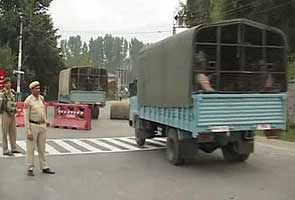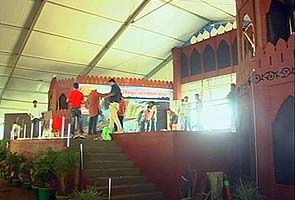At least 31 infants are reported to have died at a government-run children's hospital in Kolkata in the last four days.
While angry parents blame hospital authorities for mismanagement and negligence, doctors at the BC Roy Post-Graduate Institute of Paediatric Sciences, premier children's hospitals in the state, say most of the infants who died were admitted here in extremely critical condition.
"They are giving wrong treatment. Nurses are not listening to us. That is why the children are being affected," a worried parent said.
But Dr Trideb Banerjee, chairman of the Health Department's
Special Task Force that probes infant deaths and other such issues at
hospitals across the state, has rejected the allegations of medical
negligence. "BC Roy is a referral hospital; many patients are admitted
here in critical state. Doctors always try their best but sometimes
patients cannot be saved as their condition is very bad. There is not a
single case of negligence," he said.
The Special Task Force for Health was formed in 2011, after Chief Minister Mamata Banerjee, who doubles up as the Health Minister of the state, faced criticism over increasing number of infant deaths at several government-run hospitals across the state.
In October 2011, 18 infant deaths in 48 hours at the BC Roy hospital had provoked angry demonstrations by parents and had led to a visit by the Chief Minister.
An inquiry conducted on the orders of the government had then absolved the hospital of medical negligence, and had asked for new facilities to be added immediately. Crores were spent on setting up a 30 bed neo-natal care unit after the report.
Blaming the state government for the deaths, D Raja of the CPI said today, "It is a fact that children our dying and it is shameful that we are not being able to save our children. Somebody should take the responsibility."
While angry parents blame hospital authorities for mismanagement and negligence, doctors at the BC Roy Post-Graduate Institute of Paediatric Sciences, premier children's hospitals in the state, say most of the infants who died were admitted here in extremely critical condition.
"They are giving wrong treatment. Nurses are not listening to us. That is why the children are being affected," a worried parent said.
The Special Task Force for Health was formed in 2011, after Chief Minister Mamata Banerjee, who doubles up as the Health Minister of the state, faced criticism over increasing number of infant deaths at several government-run hospitals across the state.
In October 2011, 18 infant deaths in 48 hours at the BC Roy hospital had provoked angry demonstrations by parents and had led to a visit by the Chief Minister.
An inquiry conducted on the orders of the government had then absolved the hospital of medical negligence, and had asked for new facilities to be added immediately. Crores were spent on setting up a 30 bed neo-natal care unit after the report.
Blaming the state government for the deaths, D Raja of the CPI said today, "It is a fact that children our dying and it is shameful that we are not being able to save our children. Somebody should take the responsibility."
 With just hours left for India-born conductor Zubin Mehta's highly
anticipated concert in Srinagar's Shalimar Bagh, there is heavy security
in the city. Called Ehsaas-e-Kashmir, the event, a first of its kind in Kashmir, is being organised by German ambassador to India Michael Steiner.
With just hours left for India-born conductor Zubin Mehta's highly
anticipated concert in Srinagar's Shalimar Bagh, there is heavy security
in the city. Called Ehsaas-e-Kashmir, the event, a first of its kind in Kashmir, is being organised by German ambassador to India Michael Steiner.










